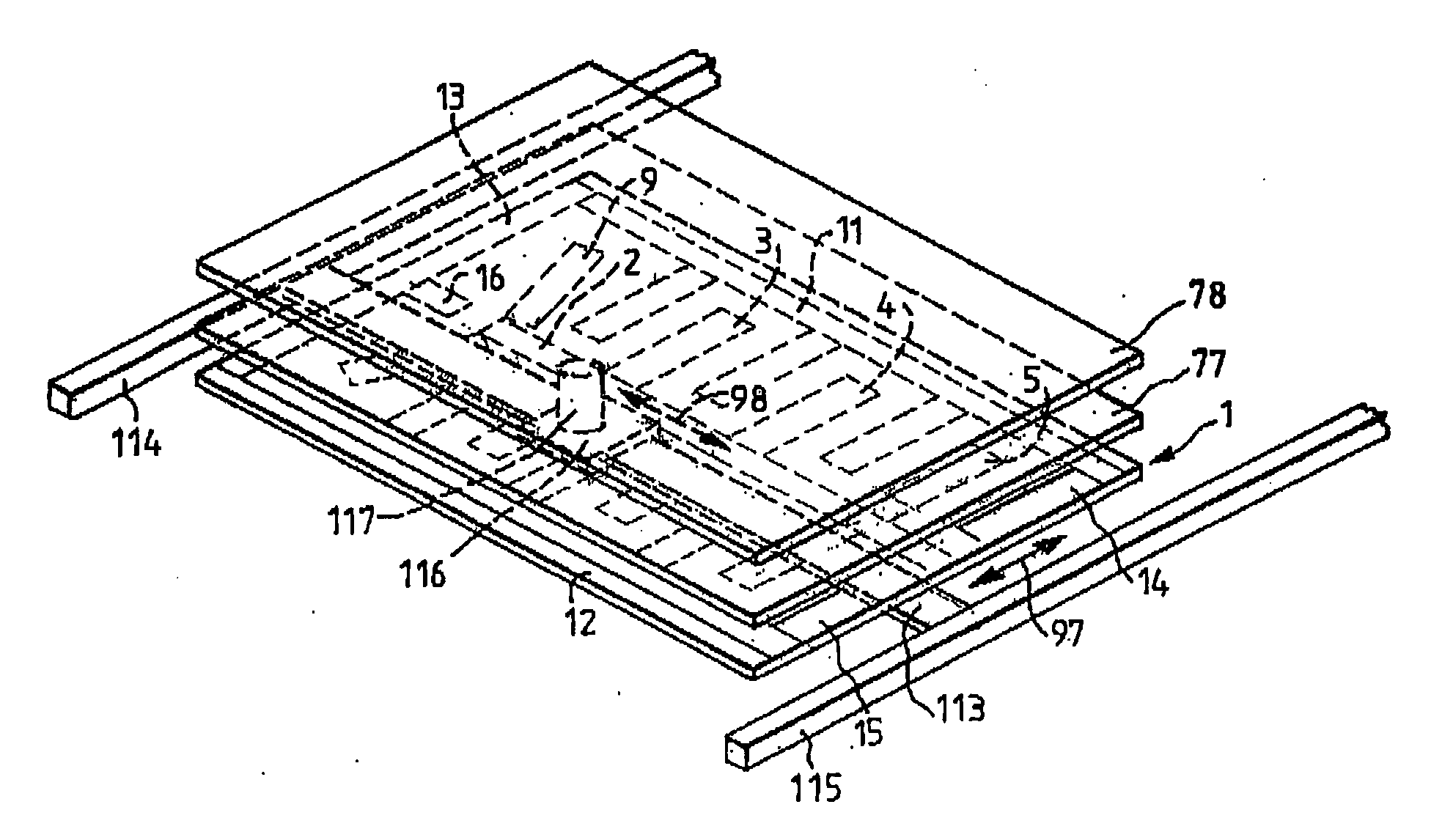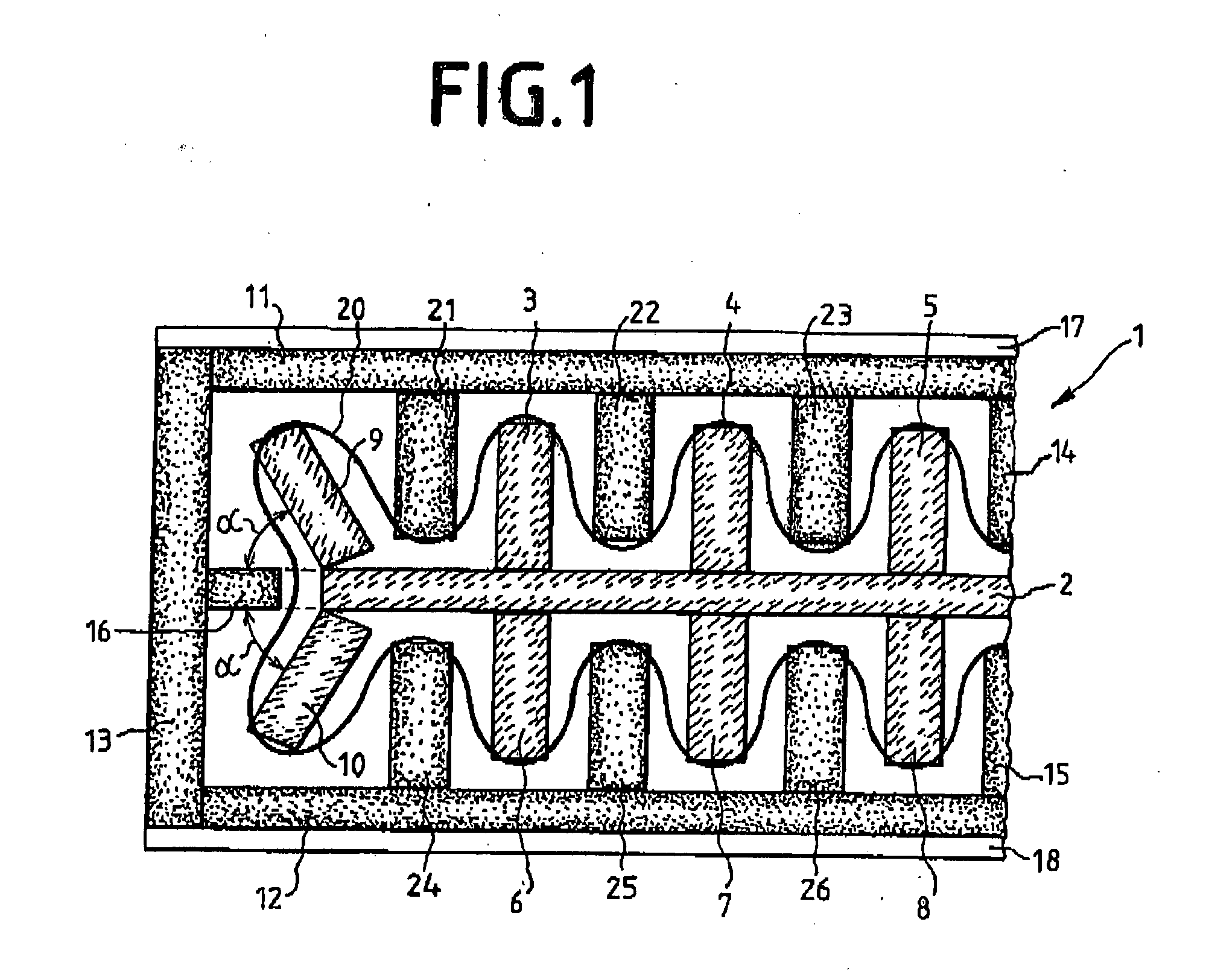Magnet arrangement for a planar magnetron background and summary of the invention
a planar magnetron and background technology, applied in the field of arrangement of magnets, can solve the problems of irregular wear of targets, cycloid electron trajectories, planar magnetrons, etc., and achieve the effect of improving the sputter effect, reducing the heating of the substrate, and increasing the probability of ionizing the sputter gas atom through collision with electrons
- Summary
- Abstract
- Description
- Claims
- Application Information
AI Technical Summary
Benefits of technology
Problems solved by technology
Method used
Image
Examples
Embodiment Construction
[0029]FIG. 1 shows a partial representation of an initial magnet configuration 1 in accordance with the invention, with which constant utilization of a target is enabled. In so doing, movements in two different directions are, however, required. On the one hand, the magnet system must be moved along the length of the target and, on the other, an additional movement along the target width is required, so that no re-coating is obtained. The magnet configuration 1 shown in FIG. 1 continues on the right side (not shown) in a reversed image. The magnetic south pole of the magnet configuration consists of a transverse bar 2, on which arms 3 to 8 are arranged parallel to each other and perpendicular to bar 2.
[0030] On the one end of bar 2, two additional arms 9, 10 of the magnetic south are provided for, the longitudinal axis of which is arranged at an angle α to the longitudinal axis of the perpendicular bar 2. The angle α is approx. 60°. At the end of the right and not displayed side of...
PUM
| Property | Measurement | Unit |
|---|---|---|
| angles of inclination | aaaaa | aaaaa |
| magnetic arrangement | aaaaa | aaaaa |
| magnetic | aaaaa | aaaaa |
Abstract
Description
Claims
Application Information
 Login to View More
Login to View More - R&D
- Intellectual Property
- Life Sciences
- Materials
- Tech Scout
- Unparalleled Data Quality
- Higher Quality Content
- 60% Fewer Hallucinations
Browse by: Latest US Patents, China's latest patents, Technical Efficacy Thesaurus, Application Domain, Technology Topic, Popular Technical Reports.
© 2025 PatSnap. All rights reserved.Legal|Privacy policy|Modern Slavery Act Transparency Statement|Sitemap|About US| Contact US: help@patsnap.com



